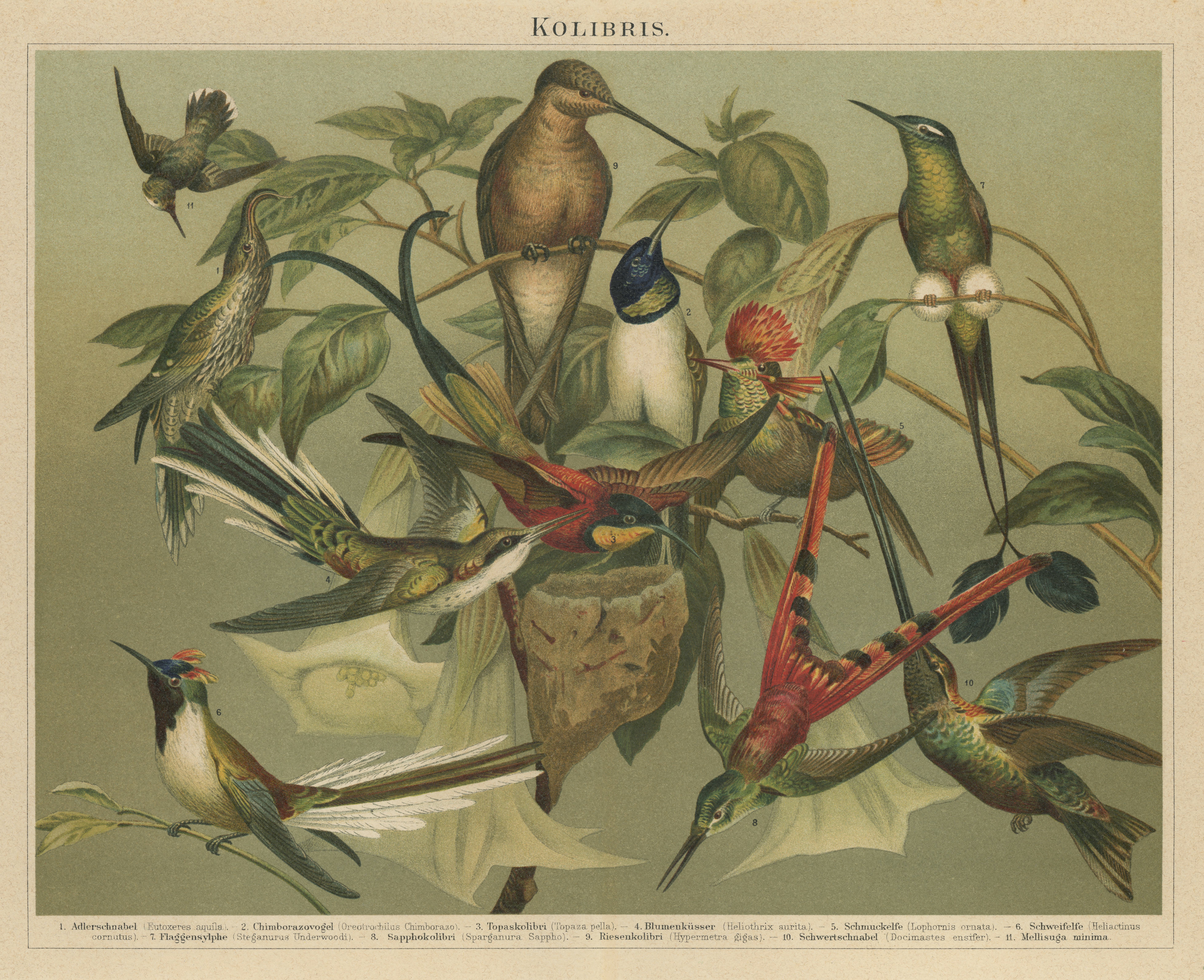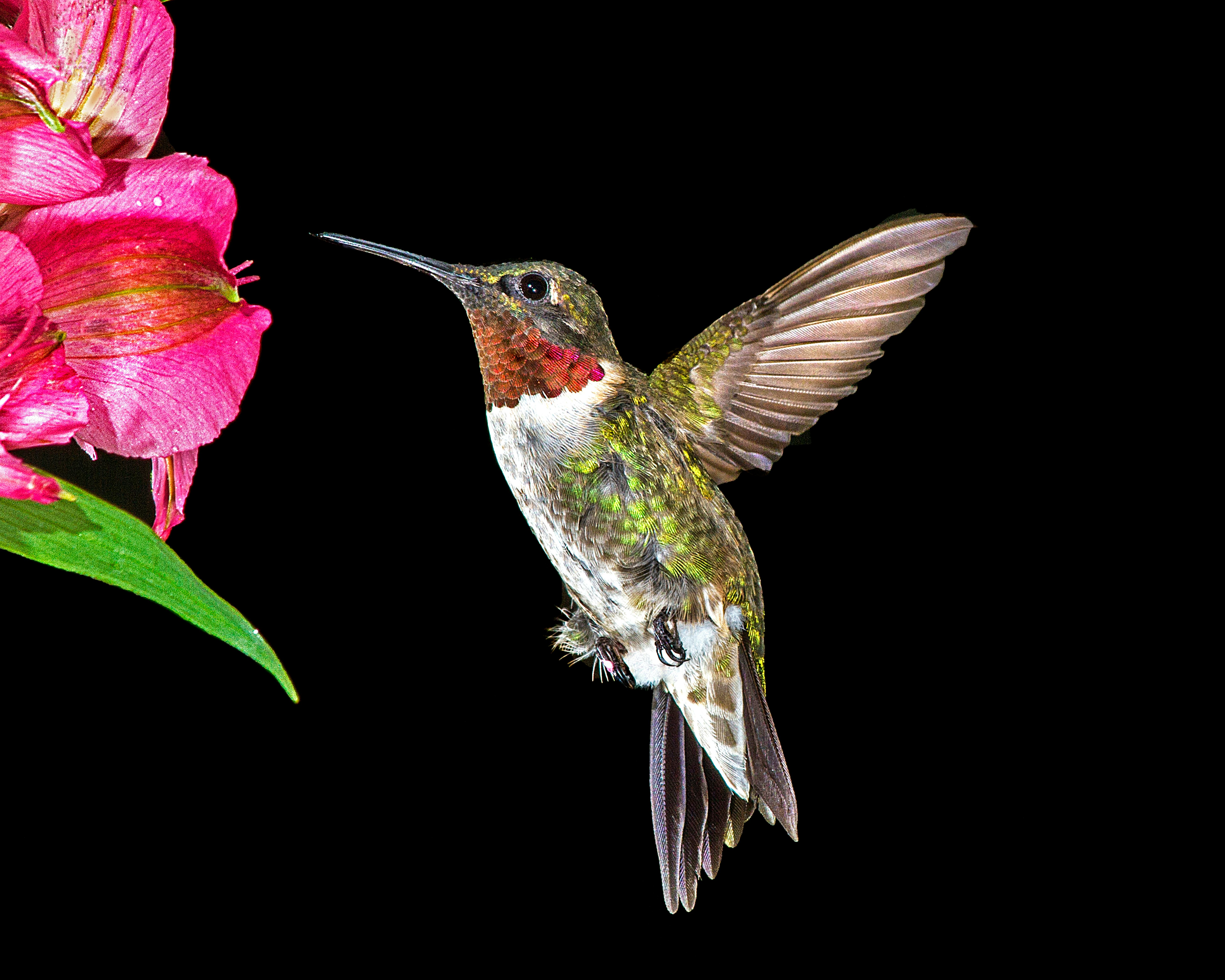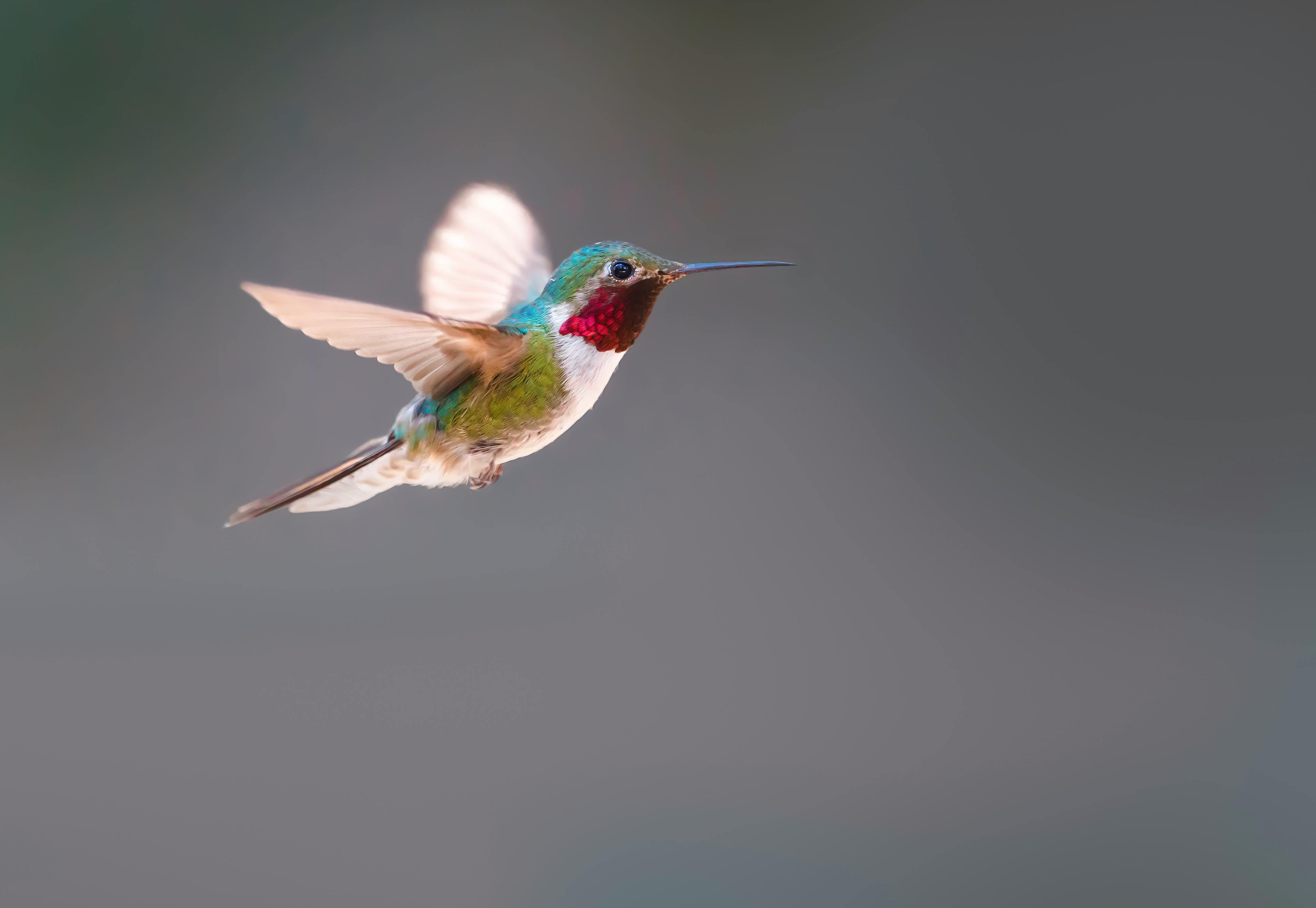
Let me describe a mystery bird that vividly illustrates some of the biological challenges birds have had to conquer in order to live as long as they do.
My mystery bird is tiny, weighing about the same as a U.S. penny. When active, it requires so much energy that it must eat up to several times its own body weight in food per day to avoid starving. During the flight, its wings beat 80 times per second, and each gram of its flight muscles produces up to 10 times the energy of the muscles of an elite human athlete when both are working at maximum capacity. In fact, it has the highest metabolic rate of any endothermic animal — and it is very endothermic. Its typical body temperature of 40°C (104°F) would be a dangerously high human fever. It requires so much fuel to maintain this level of energy expenditure that, when inactive, it drops its body temperature to that of the surrounding environment in order to not starve to death while sleeping. Its heart pounds away at machinegun-like 20-something beats per second. Even at rest, it breathes 250 times per minute, about the same rate as a panting dog, to get enough oxygen. Finally, its normal blood sugar concentration would make it dangerously diabetic if it were human.
How long do you think it lives?
I have just described a hummingbird — specifically, a ruby-throated hummingbird (Archilochus colubris), the species commonly seen flitting around parks and gardens in the eastern United States. Hummingbirds fuel their frenetic lifestyle by sucking nectar — a rich blend of sugars — from flowers. They also suck up a few tiny insects along the way for protein. Their flight is a marvel to see and hear. Their name, of course, comes from the deep hum of their wings that beat so fast as to be almost invisible.
Hummingbirds’ special powers

The 330 or so hummingbird species — all living in the Americas — are the only birds able to fly forward, backward, and hover. They can fly straight up and down like a helicopter and even do somersaults and other aerial acrobatics. Males, in particular, court females with displays of aerial acrobatics that seem impossible even as you watch them. On top of that, ruby-throated hummingbirds, for all their tiny size and high energy demand, fly 600 miles nonstop across the Caribbean twice each year during migration to their tropical wintering grounds. If birds, in general, perform astonishing physical feats, hummingbirds’ feats are among the most astonishing.
If that were all you knew about this hummingbird, you would no doubt expect them to be short-lived. After all, they live life in the fastest of fast lanes, and with few exceptions, animals that live fast die young. But you would be wrong. Ruby-throated hummingbirds can live more than nine years in the wild, even as they perform their death-defying flights across the Caribbean twice per year. Nor are they the longest-lived hummingbird. The similar-size broad-tailed hummingbird (Selasphorus platycercus), with similar energy demands, can live up to at least 12 years in the wild. The much bigger mouse lives only a few months in the wild and only about three years as a well-cared-for pet. Therein lies a secret that once fully understood, may help develop ways for people to remain healthy longer.
What is the birds’ secret?

Hummingbirds are an extreme example, but virtually all of bird biology can be understood in terms of adaptations to the exceptional energy demands of powered flight. That energy demands all suggest that birds should be short-lived, but they are the opposite. Their body temperature is higher than ours; their resting metabolism is up to twice as high as a mammal of the same size, and during flight, their metabolism cranks up even further. Even gliding flight, such as performed by gulls, vultures, and albatrosses, may look almost effortless to us, but it doubles or triples the birds’ resting metabolic rate. Fuel for their exceptional energy demands is supplied by blood sugar levels that would signal uncontrolled diabetes in a human. Uncontrolled diabetes resembles accelerated aging more than virtually any other disease.
High energy, high heat, and high blood sugar should accelerate a number of the major processes that contribute to aging, one of which is free radical production. Recall that free radicals are molecules that can damage all classes of biological molecules, including DNA. To maintain cellular health, free radicals need to be destroyed rapidly by our antioxidant defenses, and the damage they inevitably cause needs to be repaired rapidly. Birds must have exceptionally effective antioxidant defenses and exceptionally rapid repair mechanisms. In fact, some of the few studies that have been done trying to understand bird longevity found that their cells produce fewer free radicals at the same rate of energy production as similar-size mammals. However, we don’t understand how they do it. They also can withstand more free-radical damage before their cells die. We don’t understand how they do that, either.
The other aging process that, according to what we understand about aging, should be accelerated in birds is the browning of proteins. Proteins power the chemical reactions that define life. In their role in powering chemical reactions, proteins need to be folded in complex and precise ways, like origami. Any slight deviation from perfect folding compromises their function. Imperfectly folded proteins not only lose function but they become sticky, causing them to clump together with other misfolded proteins. The plaques and tangles of Alzheimer’s disease are particularly well-known clumps of misfolded proteins, but there are many others.
Proteins misfold spontaneously in the chaotic, bumper-car environment of our cells all the time and are broken down and their parts recycled regularly. However, one particular type of protein misfolding bedevils slowly recycled proteins and is most relevant to birds and to diabetics. This is the browning reaction, which is caused by heat and sugars. Sugars will attach themselves spontaneously to proteins, disrupting their precise folding. The higher the heat, the more concentrated the sugar, and the faster this browning reaction happens. It happens very rapidly at the temperatures we use in cooking. Meat and toast brown when heated because of this reaction. The same thing happens in our bodies, only much more slowly. For instance, our tendons and ligaments are composed of collagen, a protein that stiffens with age due to browning. Aging athletes have been browned to thank for their increased risk of injury. Because of birds’ higher body temperature and elevated blood sugar concentration, their tendons, ligaments, and other tissues should brown at a much higher rate than mammals. But they don’t.
How birds prevent free-radical and browning damage is something from which human health could benefit. Do they have unique antioxidants that prevent free-radical damage? Do they have unique ways of degrading damaged proteins? They must also have mechanisms that preserve cellular functions in the face of life’s challenges. There has been little research on bird aging processes but never a great, sustained effort like we might have if they were being studied for cancer prevention. Medical research remains largely mired in the study of short-lived laboratory species, such as fruit flies and mice, from which we may learn little to improve or extend human health. A Manhattan Project to understand birds’ exceptionally slow aging and their ability to maintain strength and endurance throughout life would be a fine use of research dollars.
This article was originally published on The Reader by Steven N. Austad. Read the original article here.







